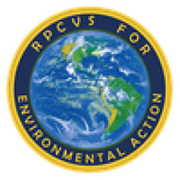Throughout the world, more and more organizations, companies and governments are going fossil free in their investment strategies. From the countries of Ireland and Norway to the city of New York, from college campuses around the world to art galleries and museums in the US, UK and Netherlands, the push to divest and reinvest in renewable energy solutions is on. The March 4, 2017 Board decision of the National Peace Corps Association to divest of their funds by March 2018 is yet another example of this important action. Why do this?
As members of the Peace Corps community who work or have worked in cities and villages in developing countries, we know that it is the marginalized people of society who are affected the most by the negative impacts of the fossil fuel industry. Whether it is local/global pollution, public health or refugees due to environmental degradation, fossil fuels have wrought damage.
Since we know it’s wrong to wreck the climate, it simply follows that it is also wrong to profit from that wreckage. In December 2016, the value of investment funds committed to divestment jumped to $5.2tn as concerns about investment in coal, oil and gas entered the financial mainstream. This race away from the industry means it is also wrong to keep our funds in short-sighted technologies.
In order to keep global warming to 2°C, we must only burn 20% of the oil, gas and coal reserves that companies want to dig up. The other 80% needs to stay in the ground where it belongs. The science is there, and there is no good reason to ignore it.
Renewables give power to the people, literally and figuratively. Renewables require a change in thinking about the power delivery system already in place, much of it locally delivered (think solar on your rooftop). A “utility death spiral” means that it is time to take the investment-astute action and divest now. Meanwhile, fund managers are investing in renewable energy, which has now passed the midway point and is more profitable than fossil fuel energy.
How easy is it to go fossil free in your investments? Easier than you think! Climate activist organization 350.org has produced a new website, GoFossilFree.org, that allows you to check your mutual funds to find out if any of the “Carbon Underground 200” – the top 100 oil or gas and top 100 coal companies – are included in the portfolio. If they are, work with your fund manager to state your investment preferences.
For individuals, go to https://gofossilfree.org/your-roadmap-to-divestment/, which will step you through the key concerns. And don’t forget to support institutional divestment movements, like this next one.
For organizations, go to https://gofossilfree.org/register-commitments/, where you will be able to submit a public statement, just as NPCA has done. These things take time, and a commitment can take as long as five years to complete, if needed.
Go Fossil Free! Divest, then Invest Responsibly
About the Author: Kate Schachter served as a Peace Corps Volunteer in Ghana from 2004-2007, an NPCA Board member and Group Leaders Forum Coordinator in 2010-13, and a Peace Corps Response Volunteer in Georgia from 2016-2017. She has been active on the leadership team of the RPCVs of Wisconsin-Madison since 2007. She is also one of the founding members of the NPCA affiliate group, RPCVs for Environmental Action. This blog first appeared on the NPCA website in April 2017.

